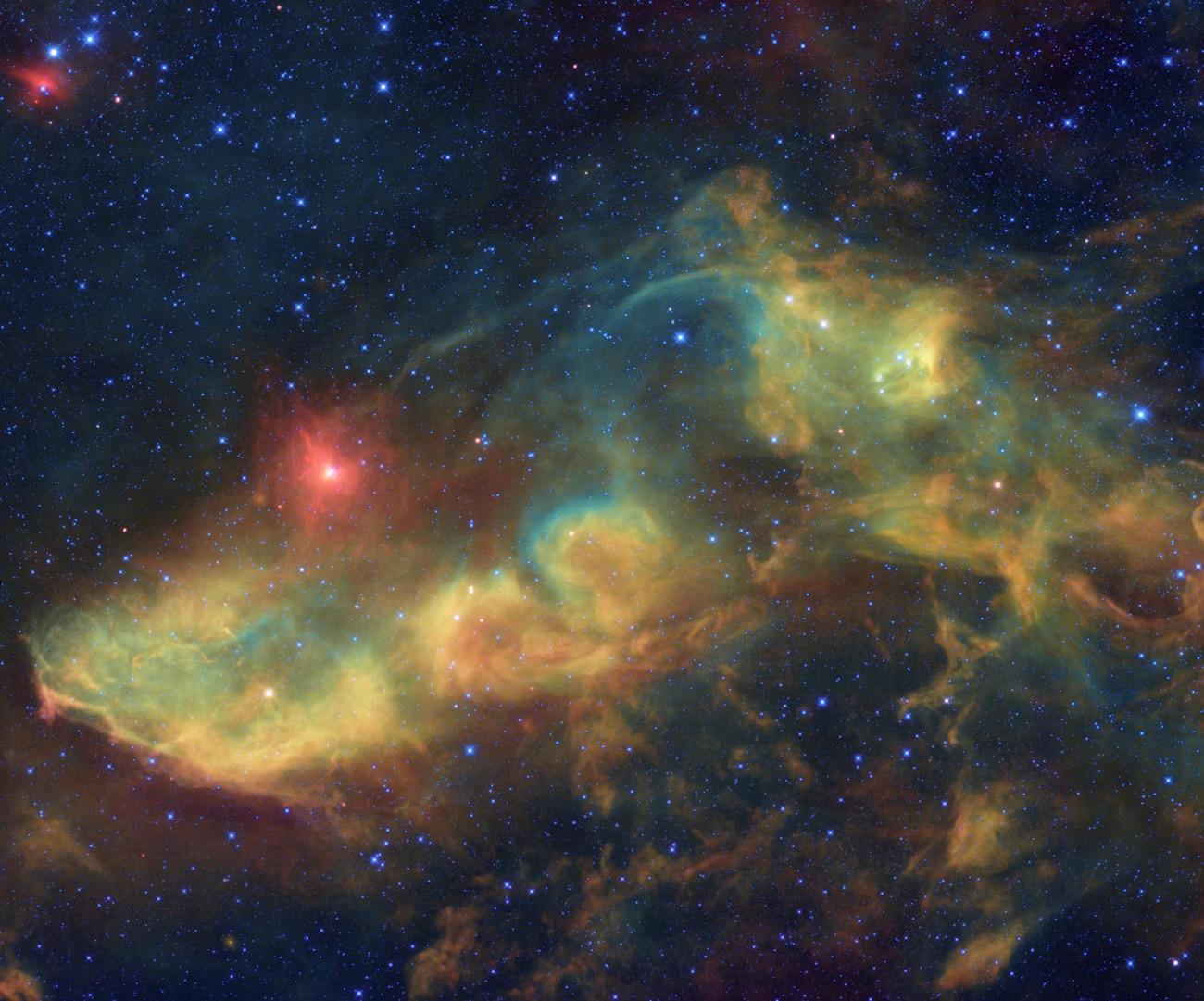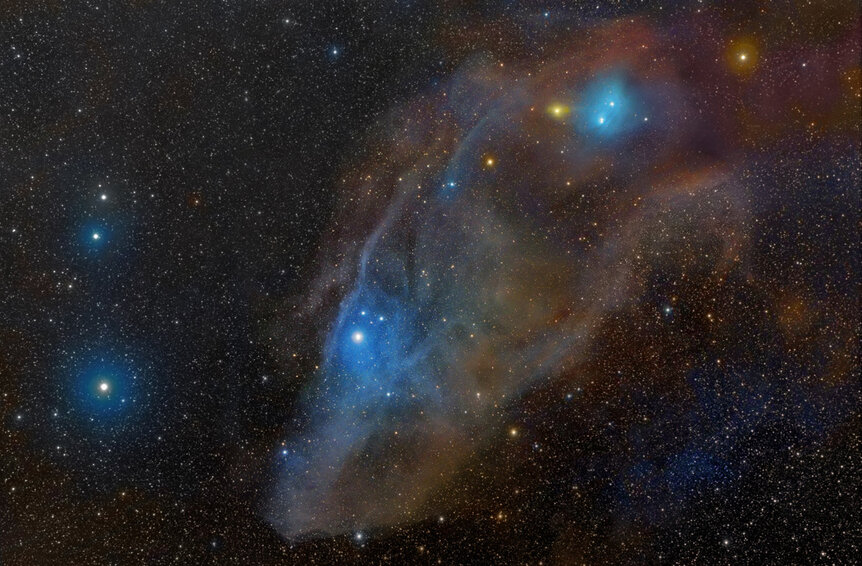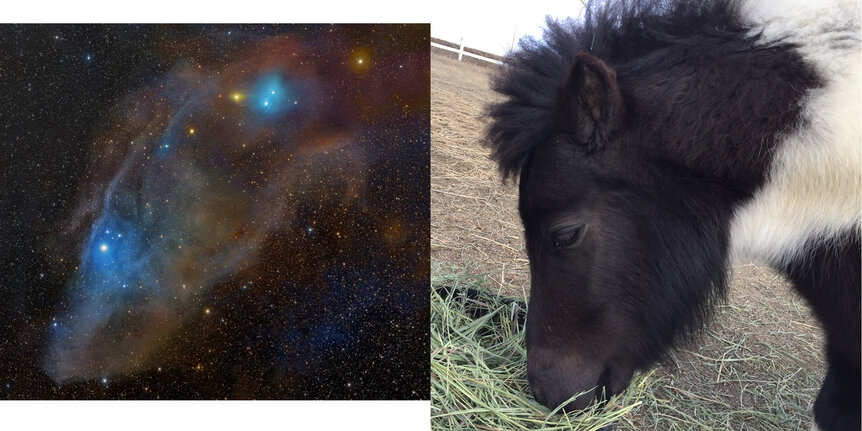Create a free profile to get unlimited access to exclusive videos, sweepstakes, and more!
Neighbula

It takes a lot to surprise me these days when it comes to beautiful, splashy nebulae. As I've said before, I spend a lot of time looking at photos of astronomical objects, so I've seen a huge number of them. Sometimes I don't recognize one because it's small and has never been seen in high-resolution before, or it's faint, or it's observed in an unusual wavelength (that can really change the appearance of a nebulae in particular, which, I'll note, you should keep in mind for later in this article).
But then a visible-light image of a big, bright nebula pops up and it turns out I've never even heard of it. Worse — given my predilection for pareidolia — it really resembles not just a familiar thing, but a thing I literally see every day after I eat my breakfast and go outside to feed my animals.
The pièce de ré·istance? The photo is by Rogelio Bernal Andreo, an astrophotographer I follow and think is truly amazing. So please, check out the amazing Blue Horsehead Nebula.
I seriously can't believe I've missed this one for so long! Look at it: It's a blue horse's head. Like, duh.
Technically, it's IC 4592, the 4592nd object listed in the Index Catalog, a supplement to the canonical New General Catalog of astronomical objects (which is so many object are called "NGC XXX"). It's located in the constellation Scorpius, just north of the three stars that make up the head of the scorpion. That just adds insult to injury here for me: This is an iconic asterism (collection of stars) that I've scanned on many occasions both with binoculars and my telescope, yet I've never noticed this object myself.
It's what we call a reflection nebula. It's a giant cloud of dust in space, a collection of bits of very tiny grainy material made up of silicates (rocky stuff) and long carbon molecule chains. This makes the dust very dark, and it tends to absorb visible light from objects behind it.
But it can also reflect light from nearby stars and scatter it too, meaning that the light gets sent off in different directions when it hits a grain of dust. Dust is predominantly made when massive stars die, so ironically we see a lot of it in nebulae where stars are forming; massive stars don't live long and explode after just a few million years, so they don't wander far from their nursery before it's all over for them.
That means other massive stars may still be forming nearby, and these stars are extremely bright and blue. Being the most luminous, it's their light we tend to see bouncing off the dark dust. Plus, the physics of scattering means that blue light is more easily sent off than red, so these dark clouds lit up by these stars tend to look blue.
In the case of IC 4592, the star Nu Scorpii is the eye of the horse (well… I could also argue the "eye" is actually in the nebulosity itself little bit above it and to the right, but I won't quibble), and is a complex multiple star, at least two of which are very bright B-type stars. It's the main source of light we see in the cloud.
And like I said, nebulae can look really different in different light. Check out this infrared view of IC 4592:
That was put together by Robert Gendler using data from the WISE astronomical satellite, which surveyed the sky in the far-infrared. What you see as green, for example, is actually 12 micron light, with wavelengths about 15 times longer than the reddest light your eye can see. This is typically emitted by warm carbon molecules (called polycyclic aromatic hydrocarbon, or PAHs), so you can actually see the very dark soot-like material in infrared.
I think it's funny it still looks like a horse's head here, too. This may even look more like a horse head than its more famous (though far smaller) cousin the Horsehead Nebula! I've always thought we should rename that to the Knight Nebula anyway, since it looks more like a cosmic chess piece. For yet another even differenter view, APOD has another take on the infrared WISE data.
And finally, just to make the humor of my failure of recognition of this magnificent object complete, I have to say that when I first saw it I laughed and laughed. The "mane" on Bernal's photo is so fluffy and pompadour-like, and that's partly why my wife came up with the name for our own horse: Tiny Elvis.
Whoa.

















